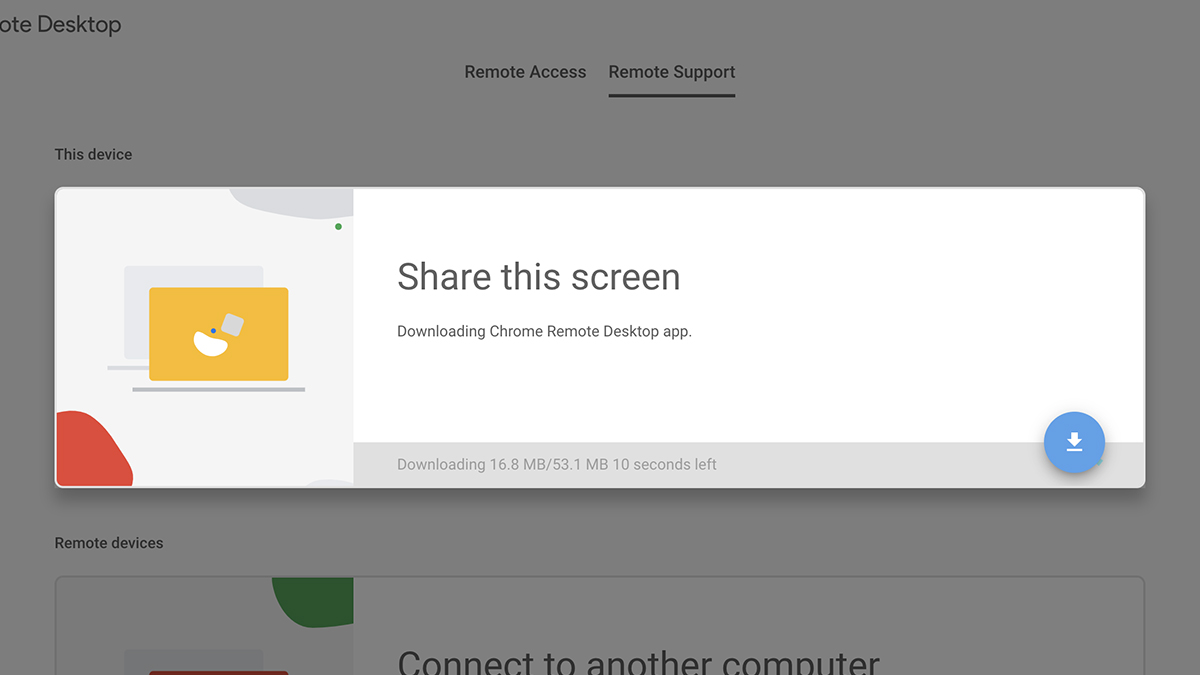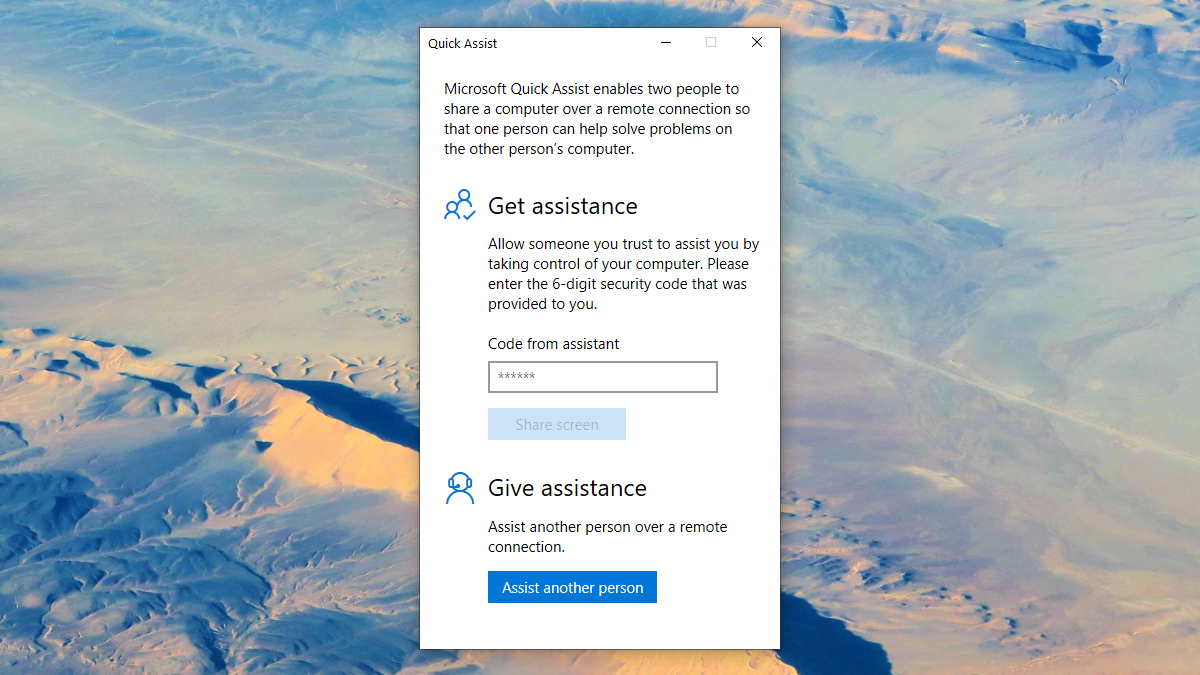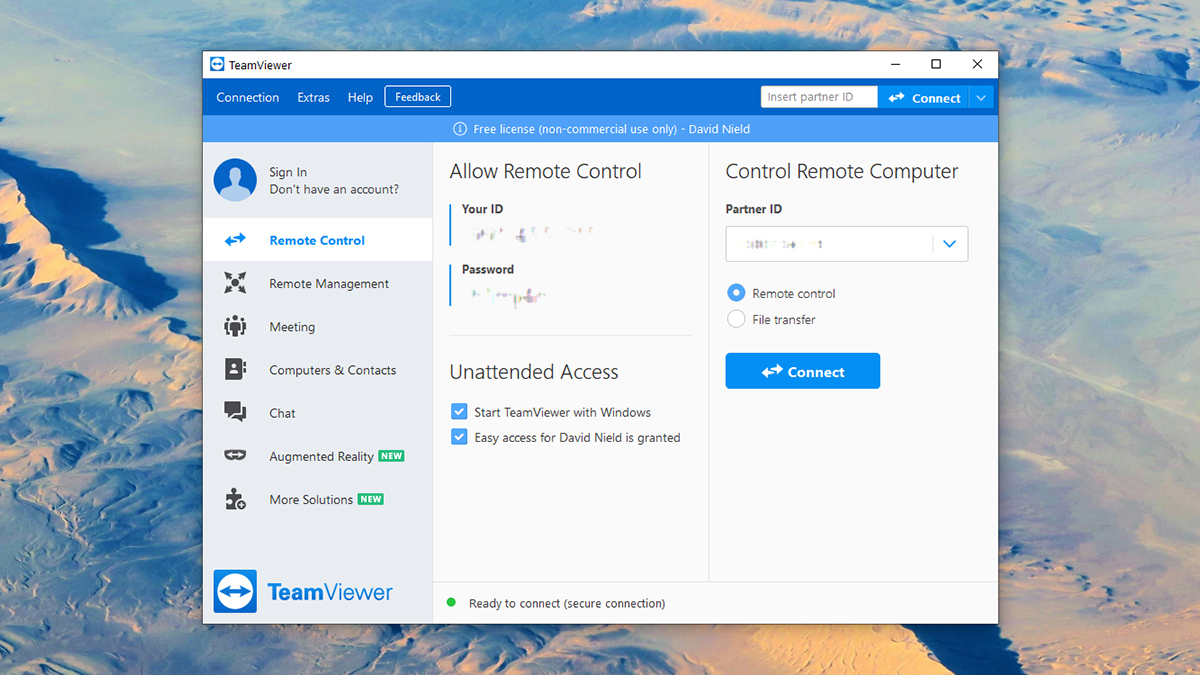While the global pandemic may not have changed your status as the go-to free tech support consultant for your family and group of friends, it’s probably limited how often you can visit them to fix laptops, phones, wifi networks, printers, and other gadgets. Fortunately for them, if not for you, it’s not that difficult to set up a remote troubleshooting session.
Arguably the best option for this is Chrome Remote Desktop. It’s free, it’s simple to use, and it works on just about any computer or mobile device. To get started, the person who needs help has to open up the Remote Desktop link in Google Chrome and then click Share my screen.
At this point, Chrome suggests installing the Chrome Remote Desktop browser extension. It’s not essential, but it does add a few extra features like keyboard shortcut support. Your friend or family member needs to click the blue download button next to Share my screen, then Accept & Install to install a small utility on their computer to manage remote access.

Then the person you’re helping needs to click Generate Code inside Chrome. This brings up a 12-digit number that you need to plug into the same Chrome Remote Desktop site. Click Share my screen and then type the code in next to Connect to another computer, and once your friend or relative confirms the connection from their end, you’re up and running.
You’ve got five minutes to share the code between you, over a phone call or text message or whatever you like, so both parties need to be online at the same time. If you’re not at a computer, you can type the code into the Chrome Remote Desktop app for Android or iOS, though obviously it’s harder to see what you’re doing on a smaller screen.
When the connection has been made, you can access the other person’s computer through a Chrome tab as if you were sitting in front of it. When the tab is open, your mouse clicks and key presses are responded to on the remote computer, not yours. At this point you can start updating drivers, reinstalling printers, checking wifi speeds, or doing whatever it is you need to do to troubleshoot the problem at hand.

Your contact will see a, “Your desktop is being shared” message at the bottom of their screen. They can click Stop Sharing at any time to break the connection, or you can just close down the browser tab on your end. It’s a relatively simple and stress-free process from start to finish.
There’s also another option on the Chrome Remote Desktop page: Access my computer. If you need to get into another computer while it’s unattended — so there’s no one at the other end to confirm the connection — you can use this method instead. It’s slightly more involved, but works in a similar way.
If both your computer and the one you’re connecting to run Windows 10, you can use a built-in feature called Quick Assist instead. Open it by searching for it on the taskbar, and you’ll see there are both Get assistance and Give assistance options. You need to start off the process by clicking Assist another person, at which point you’ll be given a 6-digit code that you need to pass on to the other person.

What they need to do is — you’ve guessed it — enter this number in the Code from assistant box, then Share screen. At this point you have the choice of taking full control of the other computer, or just being able to view what’s on screen. Once you’ve decided, and the other person has confirmed the connection, you can start your troubleshooting.
As with Chrome Remote Desktop, you can click and type as if you were actually sitting in front of the computer you’re accessing (if you’ve picked the full control option). You can even restart the other device remotely, and then carry on the remote session when it boots up again. To end a session, click the stop button on your computer or get the other person to click the X next to Quick Assist at the top.
If only Windows 10 computers are involved, you might find Quick Assist even more straightforward than Chrome Remote Desktop, though there’s no equivalent option for macOS. You do have plenty of other options for this sort of remote access functionality, but most of them are paid-for commercial programs with many more features than you’re likely to need.

TeamViewer is perhaps the best third-party option that won’t cost you anything (for personal use), though you will need to download and install a desktop client on both the computer you’re connecting to and the computer you’re connecting from. From the computer you’re connecting to, your friend or family member needs to launch TeamViewer, then an ID and password will appear on the opening screen.
From your end, you need to enter that ID in the box on the right when TeamViewer launches, and then click Connect and enter the password that the other person has given you. As with Quick Assist, you have the option of taking full control over the computer you’re connecting to, or just viewing the screen. TeamViewer comes with a variety of useful features, like turning off the desktop wallpaper to improve the connection speeds, so it’s worth a look if Chrome Remote Desktop or Quick Assist don’t suit you.
Not every tech problem is going to involve a Windows or macOS computer of course, and and in other situations you might have to simply set up a video call and do your long-distance troubleshooting that way. Anything from FaceTime on an iPad to Zoom on a laptop would do the job, though it’s not quite as seamless a solution as the remote tools we’ve discussed here. And, let’s face it, you’ll no doubt have to put up with your friend or family member constantly pointing the camera in the wrong direction.
